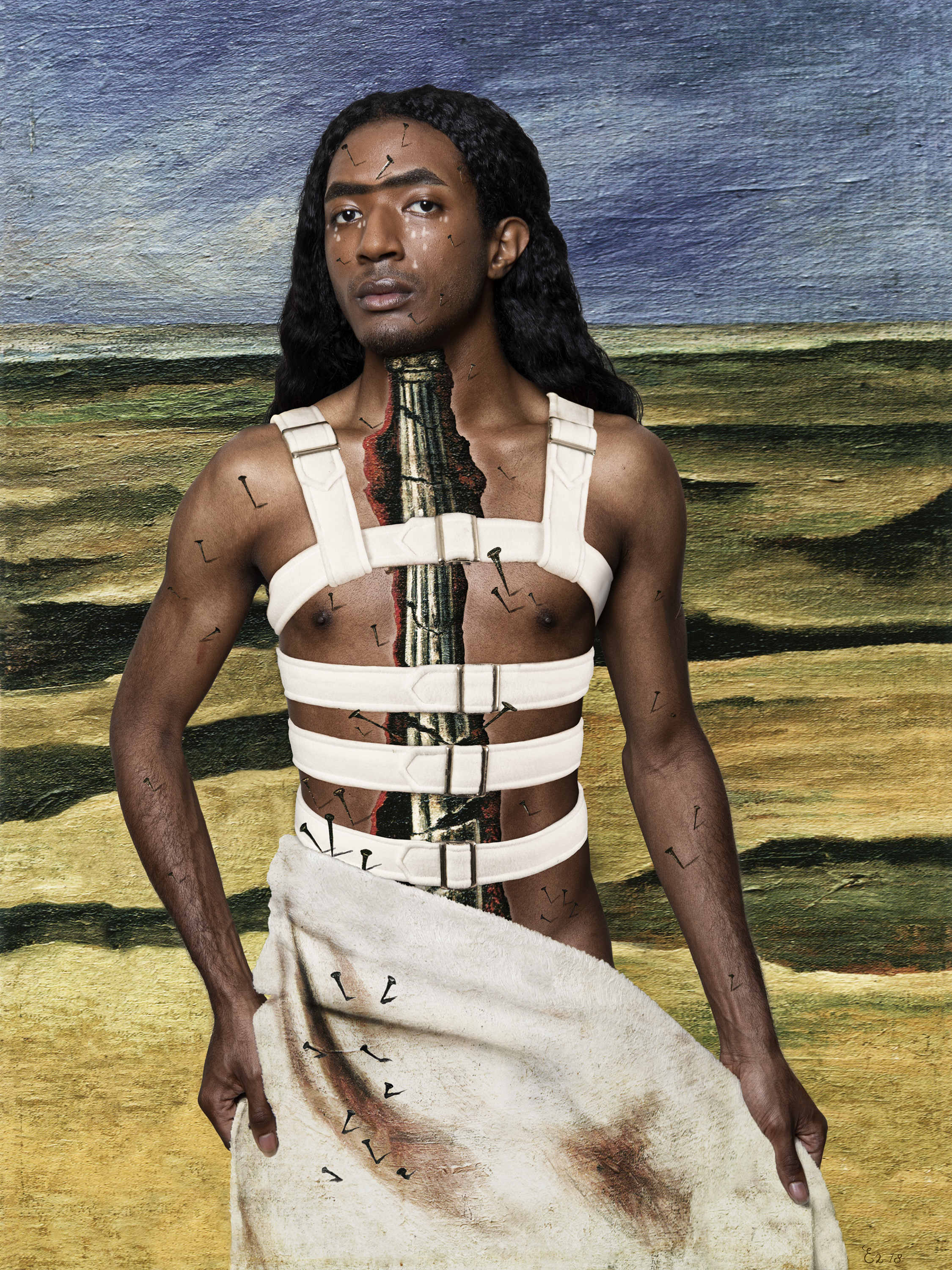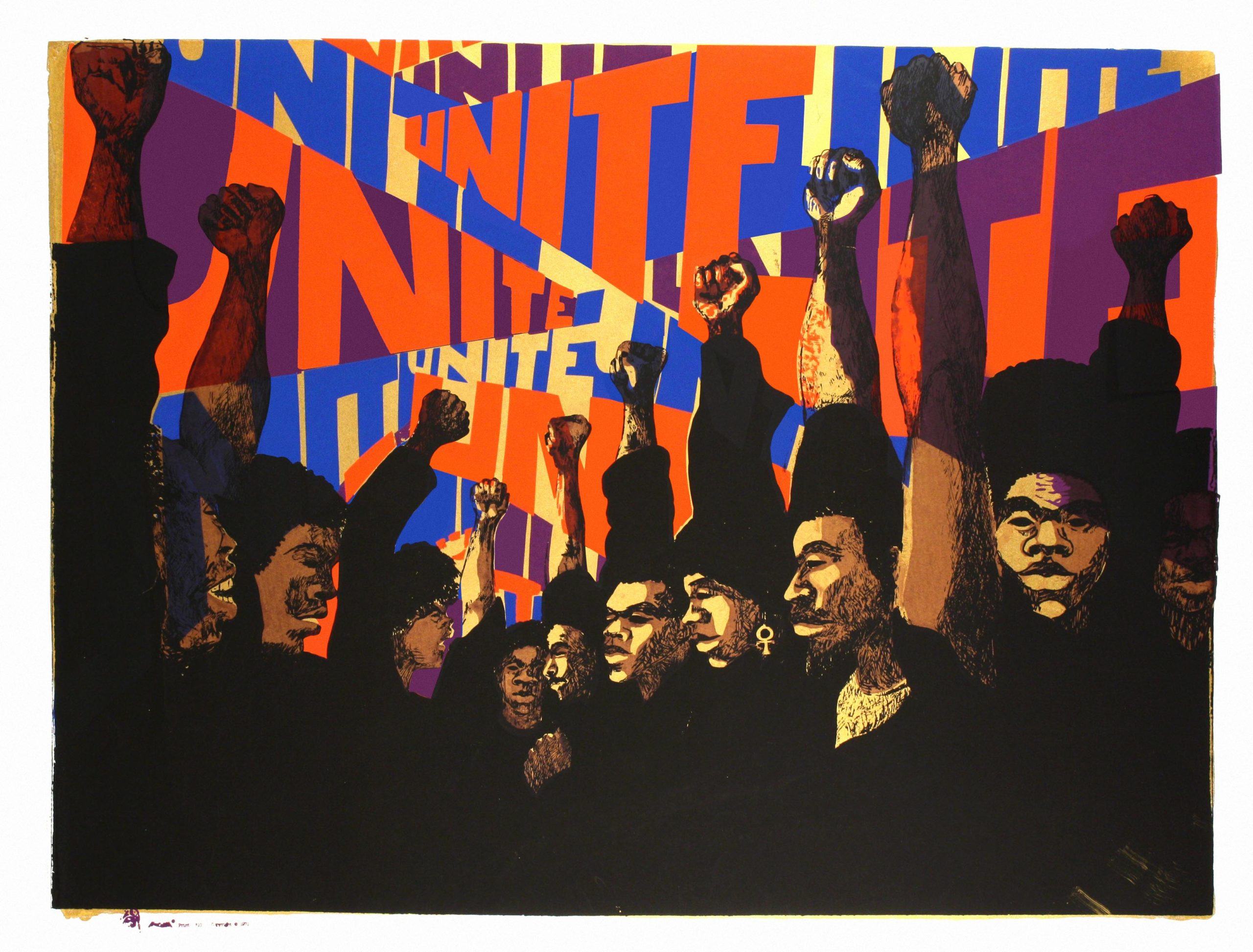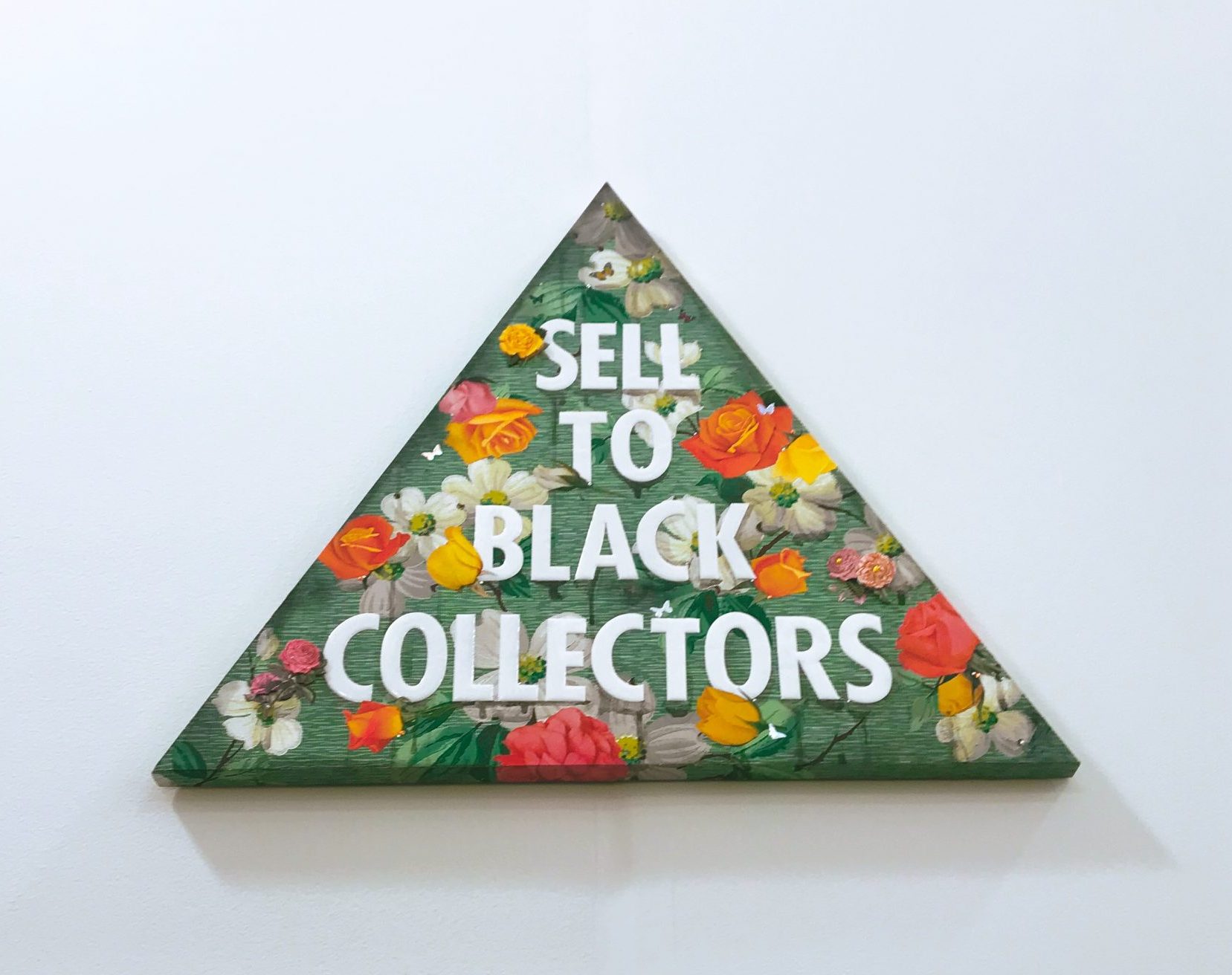Epaul Julien is a self-taught artist and native of New Orleans who captures life through various mediums, including mixed media, paint and photography. In the series In Empathy We Trust, created under the name E2 – Kleinveld and Julien — for Epaul Julien and Elizabeth Kleinveld, the two parts in this project’s singly collaborative entity — the two artists created photographical renditions of famous classical paintings. Forcing viewers to look at these classical pieces anew, through a lens of diversity. Epaul and Elizabeth hope to inspire viewers to examine the way they interpret these pictures, and to find the link between stereotypes and how they can lead to unconscious discrimination.
A: What is your AMMO? (What person, place, image, object or music has inspired you lately?)
The majesty and magnetic force of the Mississippi River has inspired me most lately.
A: How are your feelings as Art on Paper approaches? What do you hope to gain/learn from this experience?
Last year our work was at Art on Paper and we were really excited about the reception it got so we are delighted to be chosen to be there again with our gallery, the Jonathan Ferrara Gallery.
A: What are the works you’re choosing to display during the fair, and why?
We have some of the more recent remakes that are inspired by Frida Kahlo, Norman Rockwell and Magritte. I really like the remake we did of Freedom of Speech with a Muslim woman as well as the Triple Self-Portrait with me. The self-portrait was very difficult to remake but we have a great team and were able to capture every little detail to make it as close to the original as possible, while still throwing in some tongue-in-cheek details like using some of our own remakes on the side of the canvas.
A: What are you looking forward to, outside of your own work, during Armory Week?
I’m happy to see that Faith Ringgold has a solo exhibition in the ACA Galleries booth. Her work has always been an inspiration – we remade one of her “Story Quilts,” Cafe des Artistes, with E2 in 2014.
A: Much of your art is inspired by New Orleans, which is where you’re from. Can you explain to me what New Orleans represents in your art?
As I’ve spent most of my adult life in New Orleans, it has had a profound impact on my art – not only on my own work but also what I do with E2. For example, our remake of Faith Ringgold’s Cafe des Artistes featured artists, photographers, and curators from the New Orleans area with Cafe du Monde as the background. Recently we did a remake of American Gothic with me and Elizabeth in front of a typical New Orleans shotgun house.
A: I know that you had a near death experience after hurricane Katrina devastated New Orleans in 2005. Can you talk about that experience, and how it’s changed your view of art and photography?
I did have a near death experience but it wasn’t during Katrina. What happened during the storm was I lost ten years of work in my studio, and my family and I had to travel around the country until we were able to come back. Since I’d lost all of my studio photography equipment, I turned to painting and haven’t stopped.
Elizabeth and I worked together on a project after Hurricane Katrina and five years after the storm we both felt that not enough had been done to bring the black population back to the city, so we wanted to address that in way that would stimulate the viewer to question their own stereotypes that can lead to discrimination – stereotypes that they might not even be aware of.
We started taking iconic images, many from Flemish & Dutch Old Masters since Elizabeth lives in Amsterdam, and then remaking them with a twist. In the beginning the focus was more on racial discrimination, but soon thereafter we broadened the view to include other forms of discrimination, for instance: sexual orientation, religion, gender, etc. Recently we’ve been focused on some of the more contemporary masters, like Frida Kahlo and Norman Rockwell. Promoting diversity will always figure into our work because there is unfortunately so much discrimination in the world and since we started the series, it hasn’t gotten better but seems to have gotten worse.
A: Your photography of Haiti is especially captivating, what was it like visiting the island? How did you feel capturing the life there, and why did you think it was important to capture that?
After reading the book Africans in Colonial Louisiana by Gwendolyn Midlo Hall, I discovered that I could possibly trace my lineage back to Senegal through Haiti. As soon as I landed I felt at home. It was like discovering a lost chapter in my life’s book. It was also like going back in time and seeing what it was like to be in New Orleans 100 years ago. The way people live with the land, I grew up like that. Going out in the yard to get eggs from the coop. Communities living and working together! It is important because the reason I became an artist was to tell my story directly and indirectly. I have not finished the journey so stay tuned.
A: Lot of your art features black culture icons, and specifically in your E2 series with Elizabeth, you feature a diverse cast recreating classical paintings. Why do you feel it’s important to view classical art, and art in general, through a lens of diversity?
While the world has always been diverse, the Western visual art canon has focused almost exclusively on white faces and bodies, with subjects of other races depicted in the background and/or as servants of those in power. Our work seeks to correct this whitewashing of history through visual art, and to reflect our experience of the contemporary world. Today’s increasingly divided political climate only reinforces the importance of our mission.
A: After Art on Paper, what comes next?
We loved doing Freedom of Speech so much that we would like to remake the other three pieces of Rockwell’s Four Freedoms and are planning a shoot to tackle a one or two of them in May. We’d like to address the issue of the Wall in one of them, but that’s all I’ll say for now.
Photo: E2 – Kleinveld and Julien “Ode to Frida Kahlo’s Broken Column” (Courtesy of JONATHAN FERRARA GALLERY New Orleans)
For more information on Epaul’s work and E2, visit his website at http://epauljulien.com





